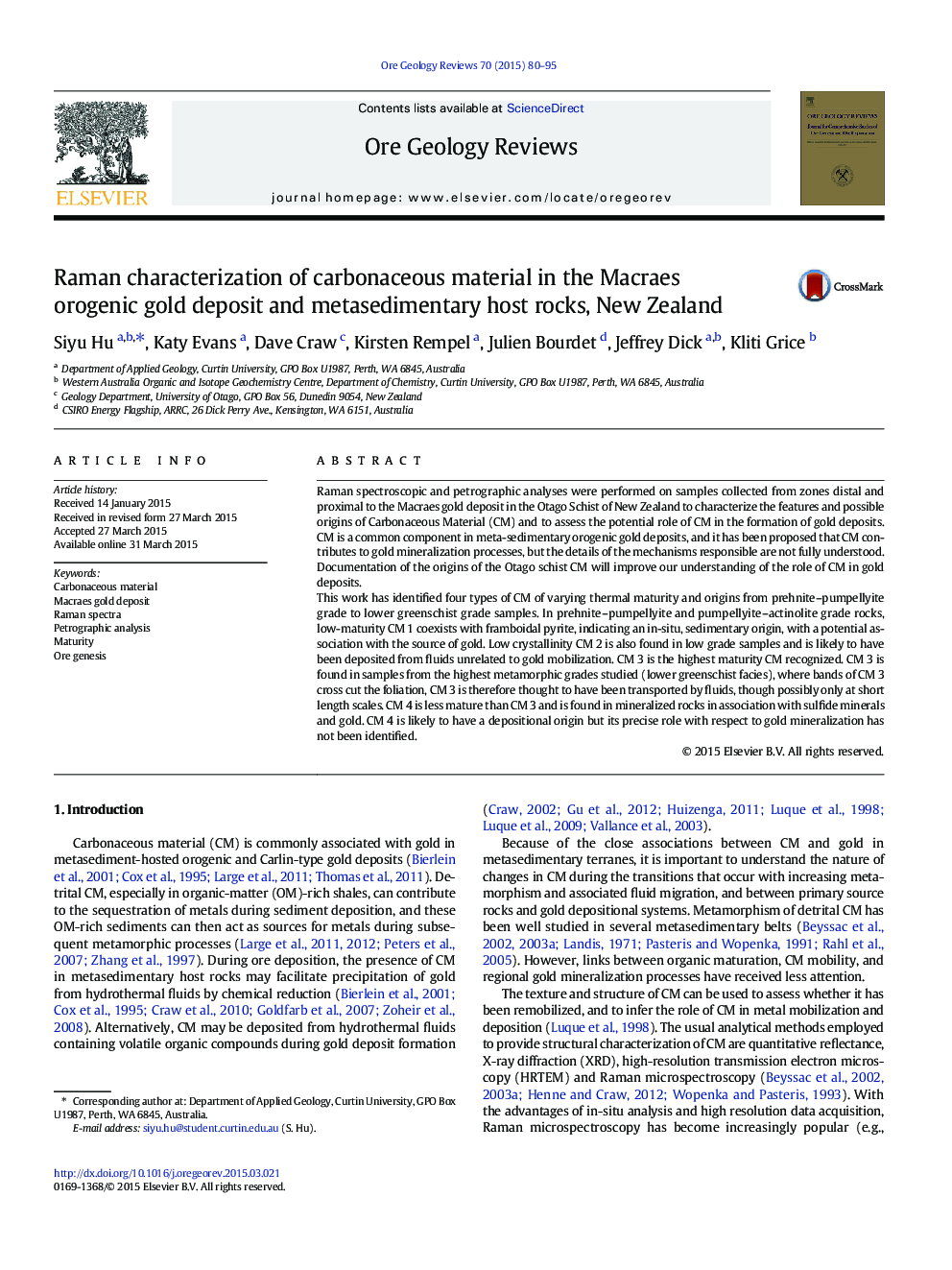| Article ID | Journal | Published Year | Pages | File Type |
|---|---|---|---|---|
| 4696969 | Ore Geology Reviews | 2015 | 16 Pages |
•Four types of carbonaceous materials have been identified in the Macraes gold deposit and its host rocks, New Zealand.•Raman spectroscopic and petrographic analyses were applied to investigate the carbonaceous materials in samples.•The thermal maturity and possible origins of carbonaceous materials have been identified.•Some carbonaceous materials may contribute to the source and deposition of gold.
Raman spectroscopic and petrographic analyses were performed on samples collected from zones distal and proximal to the Macraes gold deposit in the Otago Schist of New Zealand to characterize the features and possible origins of Carbonaceous Material (CM) and to assess the potential role of CM in the formation of gold deposits. CM is a common component in meta-sedimentary orogenic gold deposits, and it has been proposed that CM contributes to gold mineralization processes, but the details of the mechanisms responsible are not fully understood. Documentation of the origins of the Otago schist CM will improve our understanding of the role of CM in gold deposits.This work has identified four types of CM of varying thermal maturity and origins from prehnite–pumpellyite grade to lower greenschist grade samples. In prehnite–pumpellyite and pumpellyite–actinolite grade rocks, low-maturity CM 1 coexists with framboidal pyrite, indicating an in-situ, sedimentary origin, with a potential association with the source of gold. Low crystallinity CM 2 is also found in low grade samples and is likely to have been deposited from fluids unrelated to gold mobilization. CM 3 is the highest maturity CM recognized. CM 3 is found in samples from the highest metamorphic grades studied (lower greenschist facies), where bands of CM 3 cross cut the foliation, CM 3 is therefore thought to have been transported by fluids, though possibly only at short length scales. CM 4 is less mature than CM 3 and is found in mineralized rocks in association with sulfide minerals and gold. CM 4 is likely to have a depositional origin but its precise role with respect to gold mineralization has not been identified.
